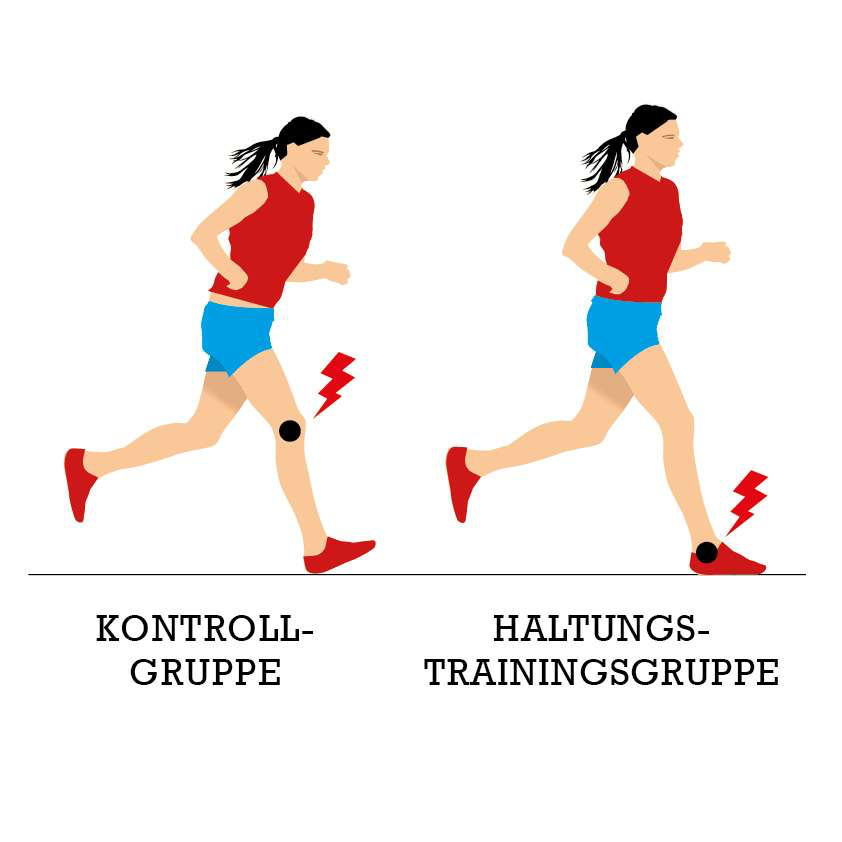Gait retraining and running injury – the simple lie and the complex
truth
Running-related injury rates are between 30% and 80% annually with the knee being the most common site of injury (van Gent et al., 2007). This prevalence has promoted research into possible mechanisms and solutions.
A recent study on novice distance runners (Chan et al., 2017) provides an excellent example of how benefits of gait retraining for injury reduction might be overstated/oversimplified. In a robust design, 320 novice runners were randomly assigned to a gait retraining or control group after initial assessment of impact characteristics on a force-sensing treadmill. The gait retraining group had four sessions per week for two weeks, running on a force-sensing treadmill that provided visual feedback of impact force. They were instructed to ‘land softer’ to reduce or eliminate the impact spike in the force trace. The control group had the same treadmill time, but without feedback or instruction. Both groups were assessed again after two weeks, then tracked over the next 12 months for injury. Gait retraining reduced loading rate, whereas controls did not change or got worse. Injury rates over the next 12 months were 16% in the retrained group compared to 38% in the the control group equating to a 62% reduction in overall injury risk with gait retraining.
These results are impressive, but the truth, as always, is more complex. There were notable differences in where injuries occurred in the two groups. Knee pain complaints in controls (29%) were twice that of gait-retrained runners (14%). Conversely, 47% of injuries in gait-retrained runners were in the lower leg, compared to 1% of the control group.
Gait adjustment simply redistributes load to other structures and/or extends the time over which it is absorbed, lowering the ‘rate’ of loading. While helpful to some joints and tissues, it is more work and harmful to others unprepared and unconditioned for it. This is the complex truth of gait retraining.
It is worth noting that the stability and elasticity of the foot are a crucial starting point determining loads on joints and muscles above. Yet, in this and every other gait retraining study, it has been ignored.
Author
Mick Wilkinson, PhD, MSc, BA (Hons)
Northumbria University, Newcastle, England
Senior Lecturer in Sport and Exercise Science & Department Ethics Lead
References
Chan, Z. Y. S., Zhang, J. H. W., Au, I. P. H., An, W. W., Schum, G. L. K., Ng, G. Y. F., & Cheung, R. T. H. (2017). Gait retraining lowers injury risk in novice distance runners: a randomized controlled trial. American Journal of Sports Medicine. doi:AMJSPORTS/2017/221127.
van Gent, R. N., Siem, D., van Middlekoop, M., van Os, A. G., Bierma-Zeinstra, S. M. A., & Koes, B. W. (2007). Incidence and determinants of lower extrameity running injuries in lonmg distance runners: a systematic review. British Journal of Sports Medicine, 41, 469-480.

